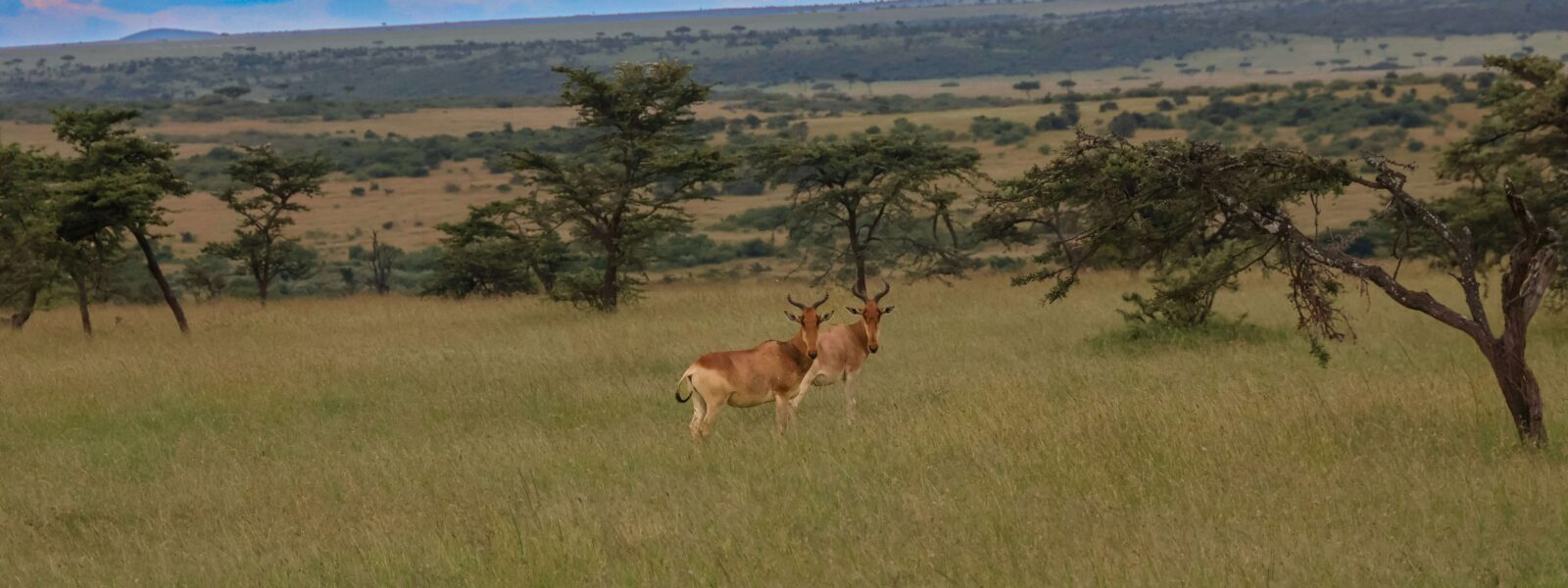Across Kenya’s plains, herds of antelopes move in graceful unison with slender legs kicking up clouds of dust beneath the blazing sun. Among them stands one of the savanna’s most distinctive residents, the hartebeest (Alcelaphus buselaphus), with the following characteristic long face, oddly shaped horns and effortless speed. This remarkable antelope is often overlooked beside the zebra or gazelle.
Hartebeest is true survivor of grasslands, a tireless runner, keen grazer and master of endurance. Hartebeest life is a full story of adaptation, strength and harmony with the wild landscapes of Kenya.
Subspecies of hartebeest in Kenya
Kenya’s sweeping grasslands and sunlit plains have two remarkable types of hartebeest, each adapted to its unique environment.
Coke’s hartebeest (Alcelaphus buselaphus cokii)
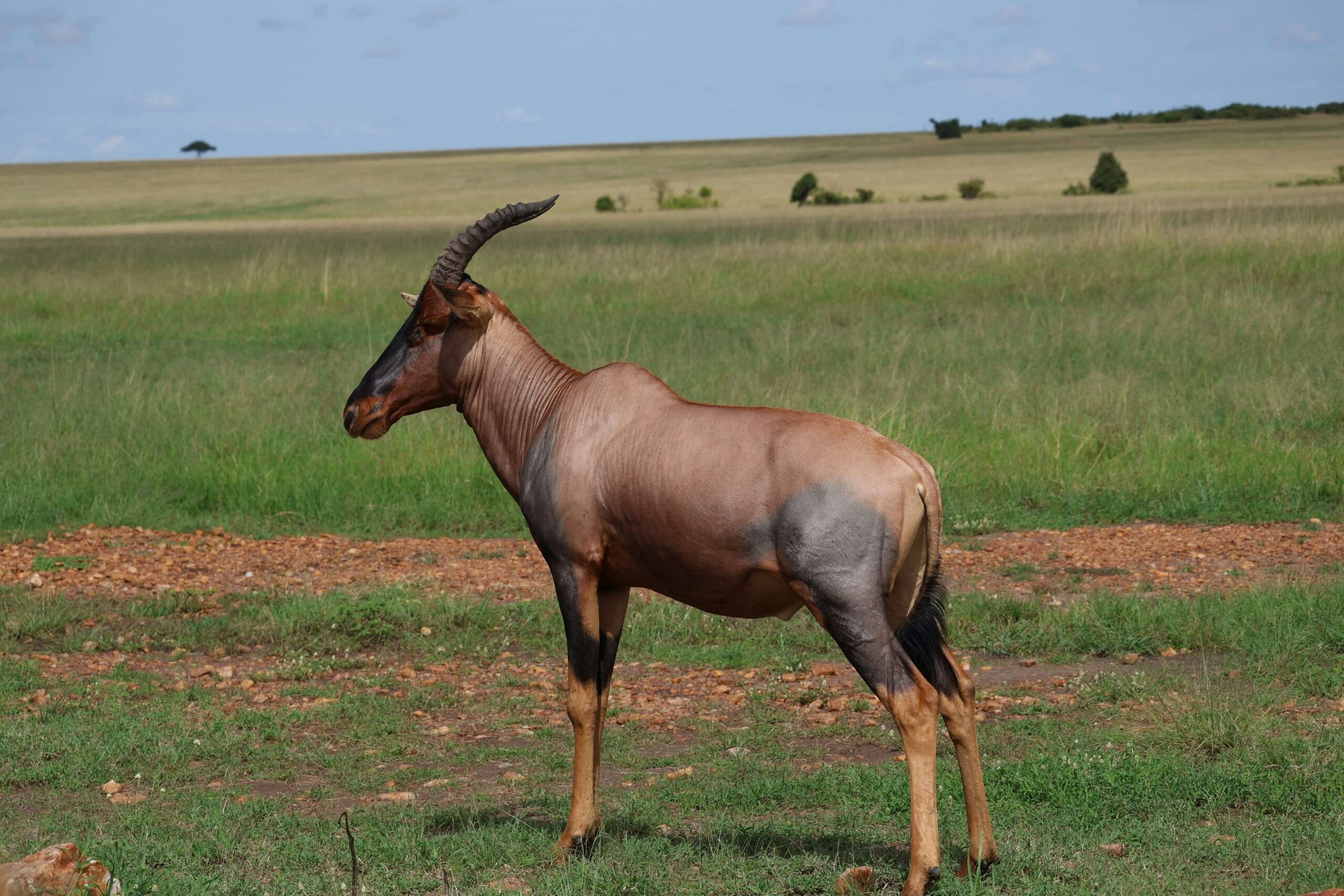 The Coke’s Hartebeest is a common and widespread subspecies of hartebeest in Kenya. It is recognized by its reddish-tan coat, long, narrow face and slightly curved horns rising close together before bending outward and inward in lyre shape. Its lighter-colored rump contrasts with the rest of its body, while its short, glossy coat helps it stay cool under intense heat.
The Coke’s Hartebeest is a common and widespread subspecies of hartebeest in Kenya. It is recognized by its reddish-tan coat, long, narrow face and slightly curved horns rising close together before bending outward and inward in lyre shape. Its lighter-colored rump contrasts with the rest of its body, while its short, glossy coat helps it stay cool under intense heat.
Where Coke’s hartebeest is found in Kenya
The Nairobi National Park
In Nairobi National Park, Coke hartebeests are easily spotted grazing on grassy plains and often seen in herds mixed with zebras and gazelles.
The Amboseli National Park
Coke Hartebeests are frequently seen feeding in Amboseli alongside wildebeests and giraffes, especially in open savanna areas at Mount Kilimanjaro.
The Tsavo East and Tsavo West National Parks
Coke hartebeests are commonly found in open bushlands and expansive plains of Tsavo National Parks, particularly near the Galana River and Aruba Dam regions.
The Meru National Park
Coke hartebeests inhabit Meru National Park’s open savanna and grassland zones, sharing habitat with Oryx, zebra and elephants.
The Laikipia Plateau
Widespread across private and community conservancies such as Ol Pejeta, Lewa, Ol Jogi, Solio Ranch and Mugie Conservancy, where wildlife and livestock coexist.
Lelwel hartebeest (Alcelaphus buselaphus lelwel)
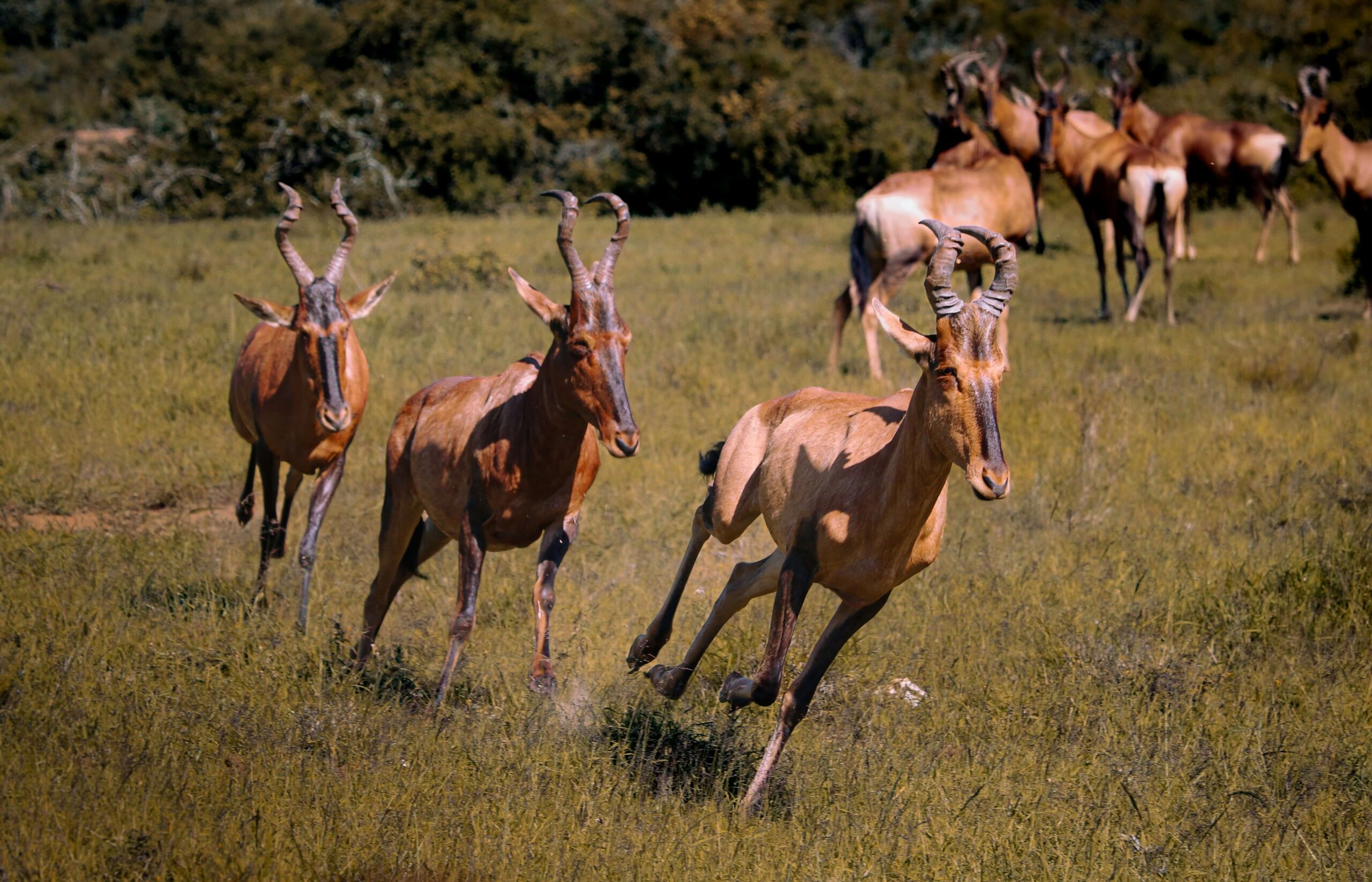 Lelwel Hartebeest (Alcelaphus buselaphus lelwel) is a larger and lighter-colored subspecies than Coke’s hartebeest, distinguished by its longer, thicker horns that stand more upright and curve less sharply. Its paler tan or sandy-brown coat is well adapted to dry northern and northwestern regions of Kenya, where the climate is hotter and vegetation is sparse.
Lelwel Hartebeest (Alcelaphus buselaphus lelwel) is a larger and lighter-colored subspecies than Coke’s hartebeest, distinguished by its longer, thicker horns that stand more upright and curve less sharply. Its paler tan or sandy-brown coat is well adapted to dry northern and northwestern regions of Kenya, where the climate is hotter and vegetation is sparse.
Where the lelwel hartebeest is found in Kenya
Turkana County
Commonly found in open plains east of Lake Turkana, around Lokichar, Kalokol and Lodwar. These harsh, arid zones are ideal for the Lelwel hartebeest, which is well adapted to extreme heat and sparse vegetation.
Nasolot National Reserve
It is considered one of the strongholds for pure Lelwel hartebeest in Kenya. Nasolot Reserve’s mix of open grassland and acacia woodland provides ideal feeding and breeding grounds.
Ruma National Park
Found in the open plains of western Kenya near Homa Bay County, where hybrid populations occur due to overlap with Coke’s hartebeest.
Unique features of the hartebeest
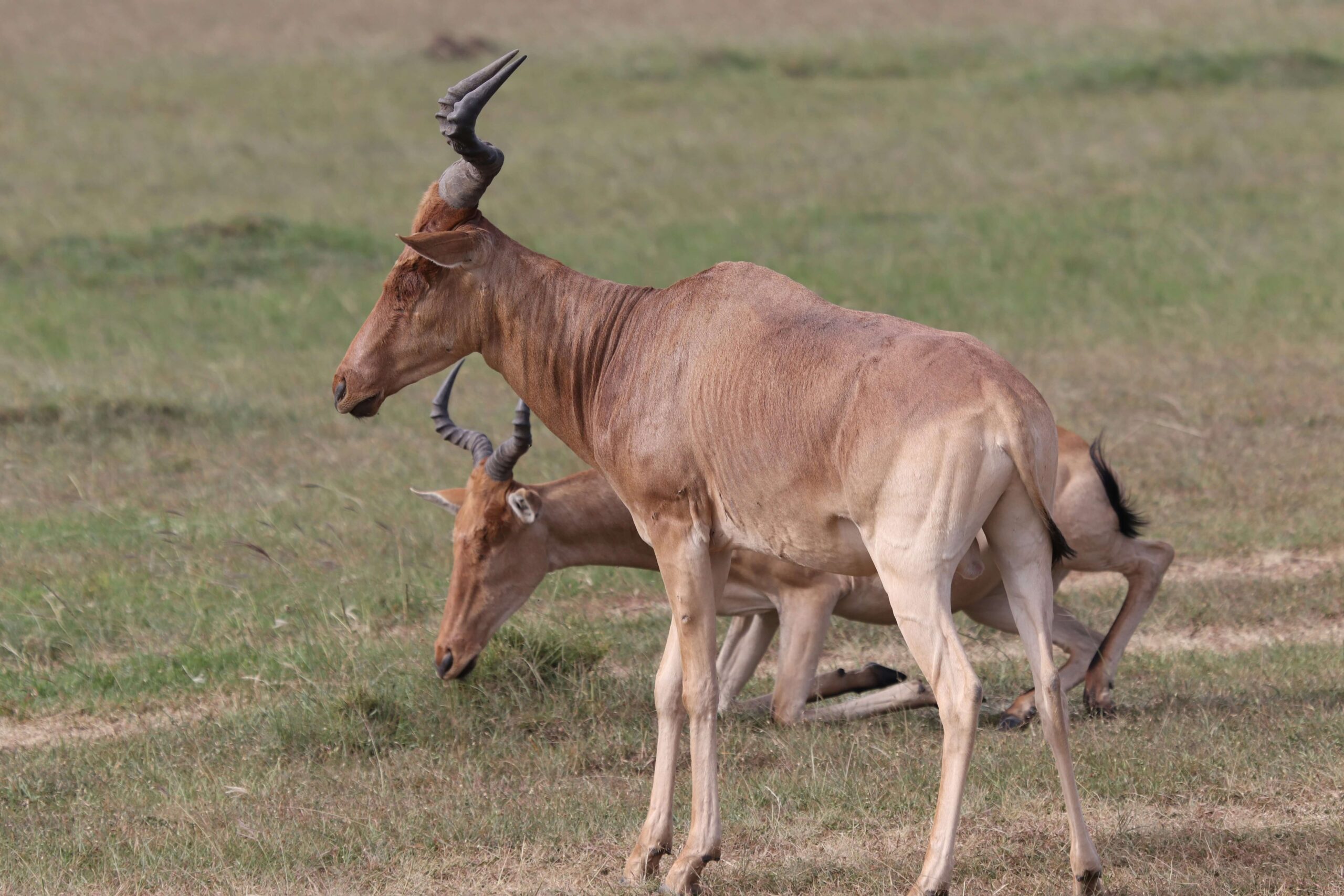
Distinctive long and narrow face
Hartebeest has one of the longest faces of any antelope, giving a unique and comical appearance. This elongated skull allows hartebeest to graze efficiently on short grasses close to the ground and is one of the key adaptations for life on open plains.
Unusual horns
Males and female hartebeest have ringed horns, rising close together from the head, curve outward and inward, forming a distinctive heart or lyre shape. The horn shape varies slightly between subspecies, such as Coke’s and Lelwel hartebeests found in Kenya.
Exceptional endurance
Hartebeest is one of the most enduring runners, maintaining high speeds for long distances, helping escape predators such as lions and hyenas in open terrain.
Sloping Back and Long Legs
Its high shoulders and sloping back give hartebeest a distinctive body shape. This build supports efficient movement across long distances and uneven ground, perfect for life in vast savannas.
Keen vision and awareness
Hartebeest have large, wide-set eyes for excellent vision, which allows hartebeest to spot predators from far. They also stand alert on open plains, scanning dangers before resuming their calm grazing.
Specialized grazer
Unlike antelopes that feed on leaves, hartebeest feed on grasses; their narrow muzzle helps select nutritious shoots that grow close to the soil.
Social and territorial behavior
Hartebeests live in herds and males are highly territorial, marking their boundaries with dung piles and defending against rivals with their horn clashes.
Hartebeest are highly adapted to dry conditions
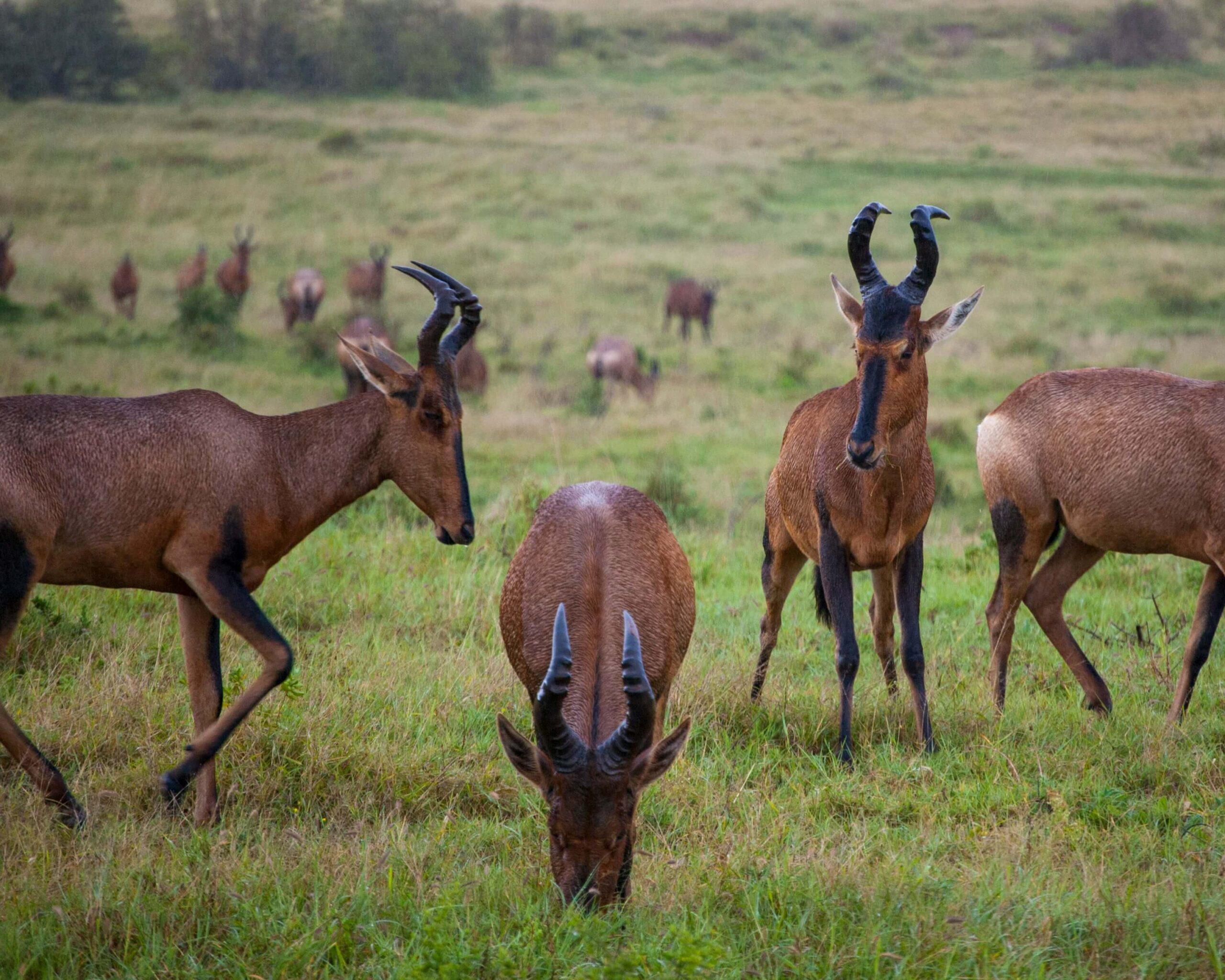 Hartebeests survive in hot, arid environments for long periods without direct access to water. They obtain moisture from grasses and are most active during cooler parts of the day.
Hartebeests survive in hot, arid environments for long periods without direct access to water. They obtain moisture from grasses and are most active during cooler parts of the day.
Strong parental instincts
Hartebeests show remarkable maternal care. After giving birth, the hartebeest mother hides her calf in tall grass for several weeks to protect it from predators. She nurses her calf until strong enough to join the herd, a strategy that increases the calf’s survival chances.
Hartebeest is a strong and adaptable antelope thriving across Kenya’s grasslands and semi-arid regions. From the southern plains to the dry north, its endurance and grazing habits help maintain healthy ecosystems and deserve continued protection to ensure hartebeest remains part of Kenya’s rich wildlife heritage.

